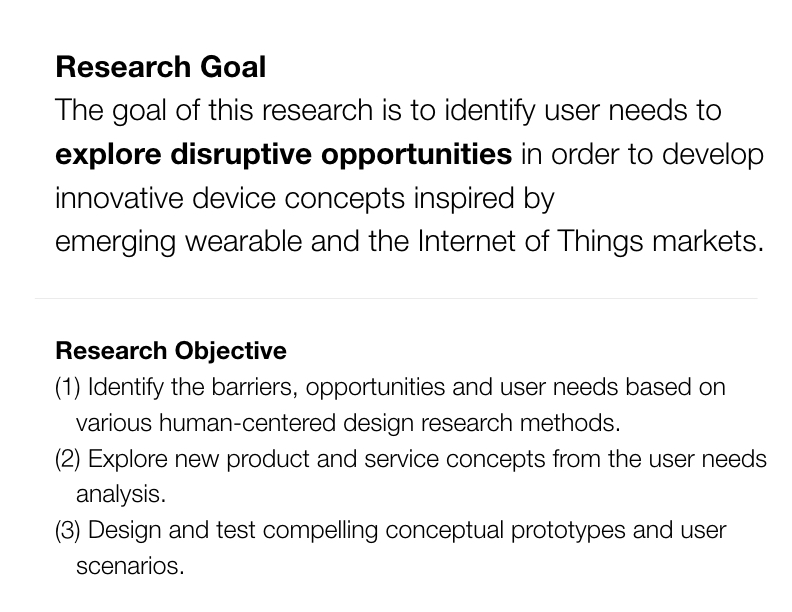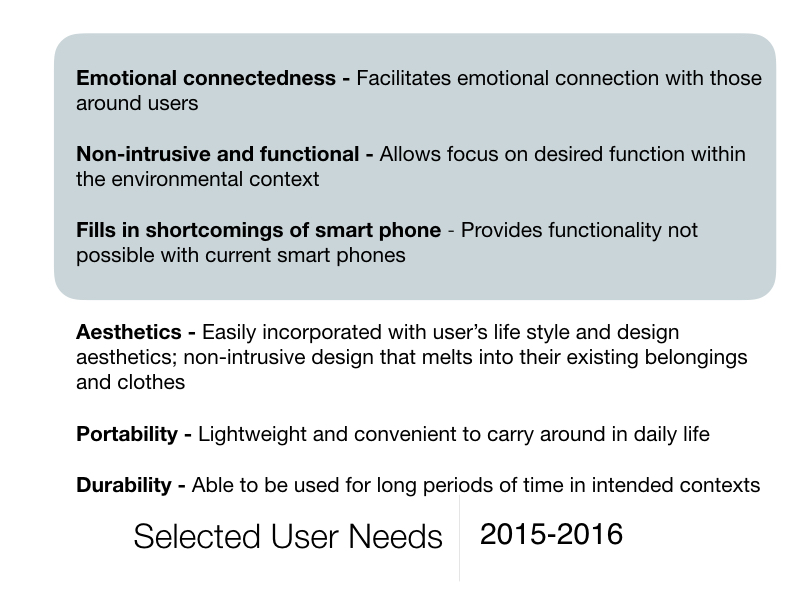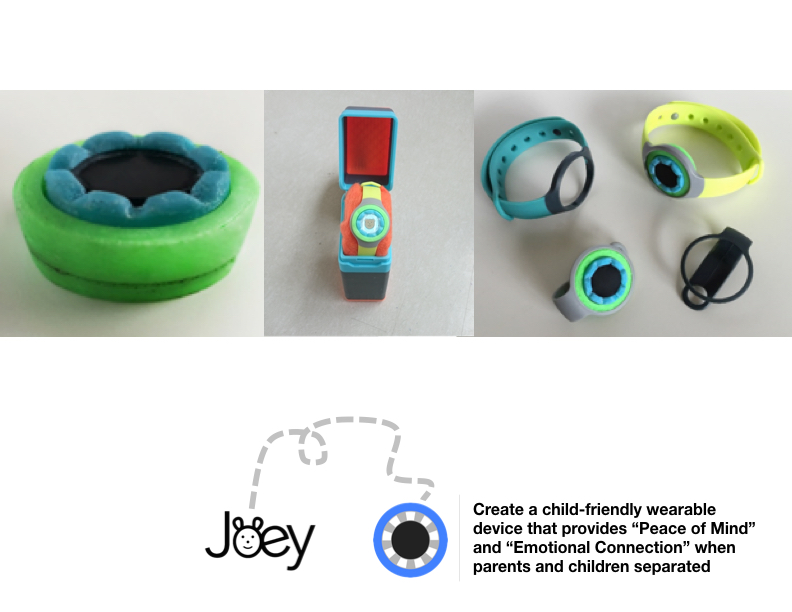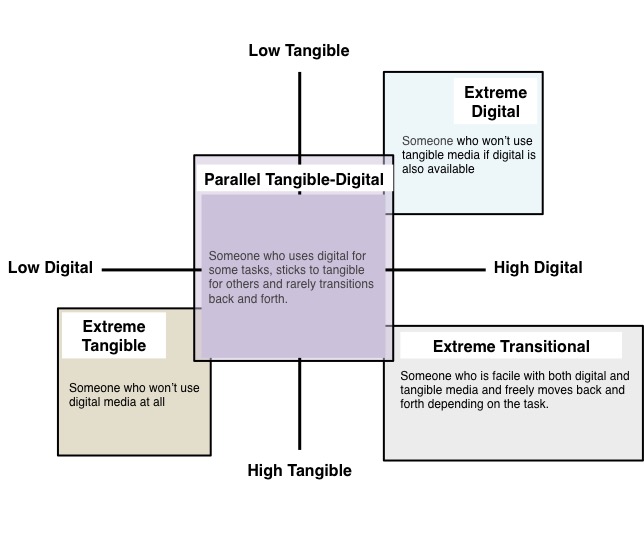2016-2017 Theme 1
Beyond Smartphones, Emerging Stretchable/Flexible Wearables Exploration in the Era of the Internet of Things, Augmented/Virtual Reality, and Data Mining
(Making the virtual feel real)
The Virtual Reality experience is limited by its unintuitive control and ineffectiveness in targeting senses besides sight. Haptic feedback can solve these issues by intuitively providing more information to the user, allowing them to explore virtual worlds in a completely new level of immersion.
Our project, in collaboration with Samsung, originated from creating a wearable leveraging emerging flexible electronic technologies to somehow enhance the Virtual Reality experience. After extensive design research, the idea that we decided to develop is a glove with an array of sensors and actuators to haptic feedback for VR users to feel virtual objects and boundaries.
Our current stage is technological research and prototyping to understand the capabilities of haptic actuators to develop artificial perception of texture and to generate a human-computer interaction “haptic language.” We aim to allow users to cognitively understand when they are touching a virtual object or surface. Based on our design and technological roadmap, we predict that this type of technology will be one of the future breakthroughs that will revolutionize the way people immerse in virtual environments.
2016-2017 Theme 2
Beyond Smartphones, Emerging Stretchable/Flexible Wearables Exploration in the Era of the Internet of Things, Augmented/Virtual Reality, and Data Mining
(Fitbit for Embryo)
Our vision is to “create a stretchable wearable device for pregnant mothers to monitor their baby’s heart rate in the comfort of their homes”, which feeds real-time data to trained professionals for interpretation to provide women in early pregnancy with peace of mind and avoid specialized care visits during pregnancy.
| Users | Mothers | Doctors |
| Primary Needs | 1.Confirmation of Fetal Status
2.Safety of Device(Non-doppler) 3.Tracking Fetal Development 4.Doctor-Patient Communication |
1.Safety of Device (Non-doppler)
2.Method for longitudinal analysis 3.Precision of data |
| Desired Features | 1.Fetal Heart Rate Tracker
2.Kick Counter 3.Fetal Position Feedback 4.Form fitting, comfortable clothing |
1.Heart Rate Fluctuation (ECG)
2.Amniotic Fluid Volume Approximation 3.Maternal Body Temperature |
| Desired Experience | 1.Peace of mind on fetal safety
2.Memory Keeping 3.Social Sharing 4.Comfort during use |
1.Reliable data tracking
2.More specialized and detailed patient monitoring 3.Ability to make more conclusive diagnoses |
| Sensing Method | Ultrasonic (Doppler) | Electrocardiogram (ECG) | |
| Summary | Emission of ultrasonic waves and the measurement of their reflections | Measurement of the electrical activity of the heart through electrodes on the surface of the skin | |
| Form Factor | Two probes (emitter and receiver) | Adhesive Ag/AgCl electrode array | Textile electrode array |
| Typical Use Case | Doctor’s office | At home | At home |
| Suitability for continuous monitoring | No – safety of long-term exposure is inconclusive | No – frequent replacement of electrodes | Yes – washable, wearable |
| Comfortable for patient | No – limited mobility during exam | No – skin irritant because not breathable | Yes – breathable, flexible |
2015-2016 Theme
Human-Centered Design Research to Explore Disruptive Opportunities with Flexible/Stretchable Wearables in the Internet of Things
Past Themes
(2014-2015)
IoT Research on Advanced UX Development Based on Innovative Technology: Integrating UX Design with the Internet of Things
(2012-2013)
Human-Centric User Research to Identify Disruptive Opportunities in Convergent Paper and Digital Use
Works from previous years
Internet of Things M.Eng. Team project 2014-2015.
<IoT Smart Office Environment; Interaction between users and systems>
What will the office of the future be like? Floating chairs and robot surrogates? Not anytime soon. The Smart Office that we envision uses Internet of Things technology to create an environment that responds to workers’ needs. Desks will automatically change from seated to standing mode when a worker gets sleepy, lights and sounds will respond to workers’ stress states, and computers will invite users to take breaks when they need them. We built prototypes based on user interviews and observations, tested them on users, and iterated to develop a vision that we are excited to share with you.
 |
 |
| Next Digital Fung Leadership Team at Midterm Poster Session |
Next Digital Fung Leadership Capstone Research Poster |
NextDigital Project Website:
http://nextdigitaldevice.wordpress.com/
Problem Statement
Although digital devices have their own unique features that differentiate them from other tangible types of resources for reading, writing and sketching, a majority of people still prefers traditional paper media as it provides better user experiences in many aspects: readability, portability, ease of making annotations, shared reading, tactile sensory experiences, etc. Even people who have tablet PCs have to carry both their journals and tablet PCs as they haven’t found effective computer devices or software for this yet.
Human-Centric Research Questions
- What are the primary barriers that prevent users from switching from paper to digital media and devices?
- What can we learn from the behaviors of different user groups: children, college students, and professionals, elderly/retired?
- What gestures do people exhibit with paper? How do these gestures and body postures differ when using digital media and devices?
- How do people collaborate with peers while using paper media? How does this contrast with sharing digital media? What are hybrid digital-media behaviors?
- What are the implications of special papers (e.g., stickers, post-its, and origami paper) for our different user groups? Do they have different purpose/needs of use?
- What is the potential for use in current consumer trends (e.g., journaling, scrap booking and 3D printing)?
Example Framework
Example Persona
Wannabe Wayne is an engineering college professor who keeps his
digital and tangible worlds somewhat separate, but really would like to be able to convert all of his current tangible media to digital. As one example, he keeps both a tangible design journal and a digital one. He would love to use his tablet computer to take all of his notes and create/ archive design sketches.
“I always take both my journal and a Tablet PC together. I tried to use
some applications on my device to get rid of my notes/journals. But haven’t found good features to substitute them.”
Obviously, the usage of digital devices is continuously growing year by year and people want to have better user experience from digital devices. You are able to identify barriers and opportunities for paper-like features based on various human-centered design methods and explore a new product concept driven by this project.
| Next Digital Student Team with 120 Concepts and Early Prototypes |
Human-Centered Design Approaches
Human-centric research methods are highly aligned with the work we do; thus we expect that our project will result in a deep understanding of the human experience along the entire product journey associated with both digital device & traditional paper usage by;
- Performing competitive analysis(Secondary market research)
- Conducting Interviews and Observation (Professionals, Elderly, College students)
- Developing User scenarios, Conceptual Design and Early Prototypes
- Concept Testing of Top Concepts and Early Prototypes
Related Publications/References/Events/News
- Kim, E., Chung J., Beckman S,, Agogino, A. M., 2016, “DESIGN ROADMAPPING: A FRAMEWORK AND CASE STUDY OF PLANNING DEVELOPMENT OF HIGH-TECH PRODUCTS IN SILICON VALLEY,” ASME Journal of Mechanical Design Special Issue on Design Theory and Methodologies (Accepted).
- Kim, E., Chung J., Beckman S,, Agogino, A. M., 2016, “DESIGN ROADMAPPING: A FRAMEWORK AND CASE STUDY OF PLANNING DEVELOPMENT OF HIGH-TECH PRODUCTS IN SILICON VALLEY,” Proc. of ASME 2016 International Design Engineering Technical Conferences and Computers and Information in Engineering Conference, North Carolina, Charlotte.
- Kim, E., Yao S, and Agogino, A. M., 2015, “Design Roadmapping: Challenges and Opportunities,” DS 80-6, Proceedings of the 20th International Conference on Engineering Design (ICED 15), Vol 6, Milan, pp. 85-94.
- “Human-Centric Study of Digital-Paper Transitions: Framing Design Opportunity Spaces”, (with E.Y. Kim, V.S. Kocsik, C.E. Basnage), In DS 75-7: Proceedings of the 19th International Conference on Engineering Design (ICED13), Design for Harmonies, Vol. 7: Human Behaviour in Design, Seoul, Korea, 19-22.08. 2013.August 2013. Won Reviewers’s Favourite Award.
-
Agogino, Alice M. (2014). “Advanced UX Development Based on Innovative Technology: Integrating UX Design with the Internet of Things”. Proposal with Samsung Electronics Co., Ltd (DMC R&D Center), March-December 2014.
- Agogino, Alice M. (2013). “Human-Centric User Research to Identify Disruptive Opportunities in Convergent Paper and Digital Use,” Inria Saclay Ile-de-France Research Center, École Polytechnique Universiteé, Paris-Sud, France, June 26, 2013.
- Agogino, Alice M. (2013). “Human-Centric User Research to Identify Disruptive Opportunities in Convergent Paper and Digital Use,” Final Report for Samsung 2012-2013 GRO Program.
(M.Eng. Thesis papers)
- Alameddine, Nada. “Samsung IOT: Hardware Design in a Children’s Wearable Device.” Diss. UC Berkeley, 2016. Print.
- Cho, Hyunil. “User Experience Design for IoT Wearable Device: Concept Visualization in Iterative Design Process.” Diss. UC Berkeley, 2016. Print.
- Dehghani, Borna. “Samsung IoT: Wearable Product Development: Mechanical and Industrial Design, and 3D Modeling.” Diss. UC Berkeley, 2016. Print.
- Kim, Hyeji. “Samsung IoT Wearable Product Development Quantitative Analysis of User Experience Expectations on Wearables: Computerized Clustering and Scenario-based Conjoint.” Diss. UC Berkeley, 2016. Print.
- Tung, Jessie, “Design for Manufacturing of a Child-Friendly Wearable Project.” Diss. UC Berkeley, 2016. Print.
- Chinen, J. (2015). IoT and the Restorative Smart Office,” MEng Capstone report, UC Berkeley. (Prof. A.M. Agogino thesis advisor).
- Frese, W.J. (2015). “Design of a Bioreactive System for Emotionally Intelligent Internet of Things Environments,” MEng Capstone report, UC Berkeley. (Prof. A.M. Agogino thesis advisor).
- Hamstra, L.B. (2015). “Environmental Responses to Stress in the Office of the Future,” MEng Capstone report, UC Berkeley. (Prof. A.M. Agogino thesis advisor).
- Lim, D. (2015). Rapid Prototying in UX Design Research for the Internet of Things,” MEng Capstone report, UC Berkeley. (Prof. A.M. Agogino thesis advisor).
- Segovia, O. (2015). “Audio, IoT and the Advent of the Smart Office,” MEng Capstone report, UC Berkeley. (Prof. A.M. Agogino thesis advisor).











